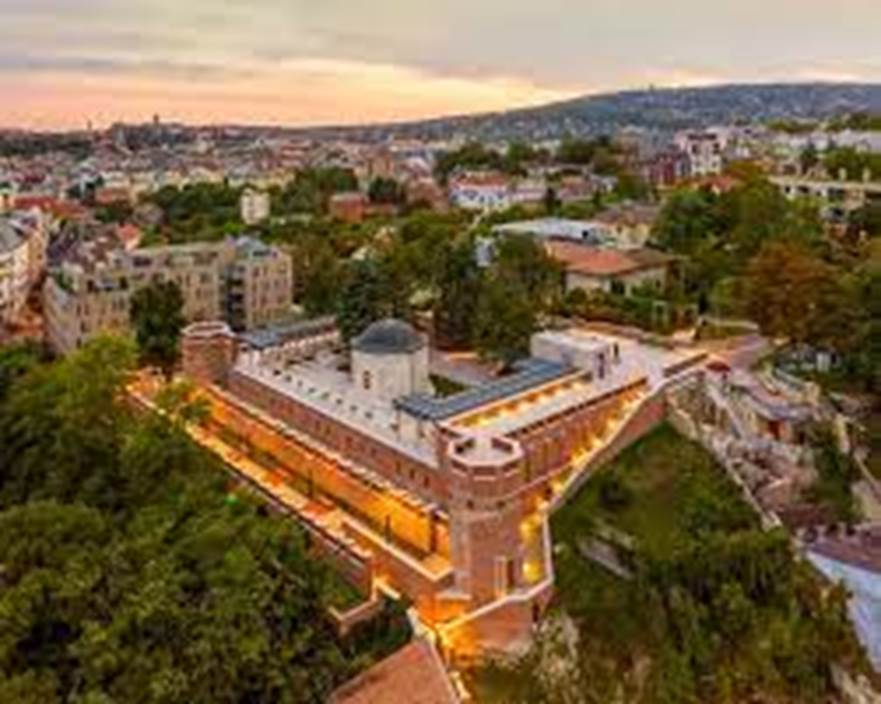

In 2017, the Gül Baba Tomb Heritage Foundation was established with the purpose of preserving the tomb and maintaining the surrounding gardens. The Hungarian Government would like to develop the shrine into one of the tourist destinations
Hungary under Ottoman Rule
By Dr Syed Amir
Bethesda, MD

In my student days in England in the sixties, I yearned to visit Budapest, the capital of Hungary and reputed to be one of the world’s most beautiful cities. However, I did not have the opportunity to do so until many years later when I retired from the National Institutes of Health some eleven years ago.
Travel planning was easy. The storied European cities of Vienna, Budapest, and Prague are connected by fast, frequent train service. I traveled by train from Vienna to Budapest and had a marvelous experience as the train sped through sleepy villages, and lush fields, traversing forests of power-generating windmills. In Europe, national boundaries no longer exist, and I never knew when the train crossed from Austria into Hungary. There was no inspection of passports or customs checkpoints as both countries are members of the European Union.
However, a slight problem arose coming out of the station. How to pay for the taxi? The European currency Euro is not accepted in Hungary, as it has its own currency named Florint. I was able to exchange my dollars for Florints after paying an exorbitant fee. The Hungarian language is also different from German and does not belong to the family of Indo-European languages. Communication in English was, therefore, a little more difficult in Budapest than in Vienna; however, many young people can now communicate to a varying degree.
Before getting there, I had no idea that Budapest was a twin city, divided by the Danube River; the eastern half is called Pest while the western half is Buda. The country’s majestic parliament building, businesses, and Government offices are mostly in Pest. The national parliament building by the bank of the Danube, patterned on the British Parliament, was built during 1884-1902. It was much damaged in the Second World War but has since been rebuilt and refurbished. It remains one of the most popular tourist sites.
Buda is distinctly different from Pest as it is mountainous and very picturesque. According to legend, people were afraid to build houses and live there in ancient times. The common belief was that the region was haunted, an abode of witches and demons, and whoever lived there would come to grief. Regardless, it did not discourage the Mongol warlords, Soviet Generals, or Turkish Pashas in their days from building luxurious villas and palaces with stunning views of the Danube. The most impressive site in Buda is the castle, the royal residence of former Kings of Hungary. It has undergone many cycles of destruction and rebuilding, and it is said that Sultan Suleyman, the Magnificent, stayed there once during the Hungary campaign. After their conquest, the Ottoman soldiers carried away precious bronze statues and valuable manuscripts from the National Library but spared the castle.
Hungary has suffered many foreign invasions in its history. Mongols invaded the country twice. In 1241, they conquered large swaths of Hungary and wrought great destruction to Pest but did not cross the Danube to attack Buda. When they seemed unstoppable, news came from Karakoram, the capital city, that the Great Khan, Batu Khan, had suffered a seizure and had died. A new khan had to be chosen and the Mongol commanders hurriedly retreated to their homeland to stake claim to be the new Great Khan. It is said that the fortuitous death of Batu Khan saved Europe from being overrun by the Mongols. Otherwise, there was nothing between Budapest and Paris to block their advance.
Hungary was conquered by Sultan Suleyman in August 1526 at the Battle of Mohács and made part of the empire. The Ottoman rule lasted for about 150 years. The capital of Turkish Hungary was Buda from where a resident Turkish Pasha ruled the territory, which was divided into divisions, called Eyelets. However, the Ottomans discovered that the province was a drain on their economy, had few resources, and was too far from Constantinople on the outer edge of their empire to control effectively. It was also underpopulated and though they attempted to bring immigrants from other parts of the Empire, the project was not successful.
The Ottoman rule over Hungary was defined by its religious tolerance and there were no large-scale forced conversions. Even after a century of Turkish rule, the population of the country remained around 90% Christian. The Ottoman rule ultimately ended in 1699, when the country became part of the Austro-Hungarian Empire.
During my short stay in Budapest, I actively sought any evidence of Islamic presence but found very little. Most of the Islamic monuments were eliminated during the period following the end of Turkish supremacy. The two notable exceptions are the tomb of the dervish, Sufi Gul Baba in Buda, and the imposing mosque of Pasha Qasim in the city of Pecs. While the mosque was converted into a Catholic Church soon after the end of Turkish rule, the inspiring tomb of Gul Baba still stands on one of the hills of Buda.
Gul Baba was a Sufi-Darvesh of the Bektashi order-- a Sufi order that started in 16th-century Anatolia. He was a poet and a soldier who reportedly arrived in Hungary with Sultan Suleyman's forces. There is little first-hand information available about him, except that he died on September 2, 1541, and was buried where his tomb stands today. The Sultan, reportedly, attended his funeral prayer.
On a cold blustery day in Budapest, I decided to visit Gul Baba’s mausoleum, reaching there after climbing several sets of steep stairs on Mecset (mosque) Street. I found a lone Turkish caretaker in a nearby office working on his computer. There were no other visitors. On my request, h e led me to the mausoleum, unlocked it, and then hurriedly turned back without any explanation. Inside, the sarcophagus was draped with an expensive cloth covering decorated with verses from the Qur’an inscribed in golden letters. The interior walls were bedecked with costly carpets and Turkish flags.
Gul Baba is believed to have brought and introduced roses to Hungary. His octagonal tomb, built by Ottoman rulers between 1543 and 1548, was appropriately situated in the midst of a beautiful rose garden in full winter blossom. Preaching universal love, religious tolerance, and harmony, Gul Baba is revered by both Turks and Hungarians.
At the time of my visit, the Mausoleum complex was maintained and supported by the Turkish Government and administered jointly with the Hungarian Government. Because of growing interest in recent years, the mausoleum and surrounding garden have undergone renovation and expansion. In 2017, the Gül Baba Tomb Heritage Foundation was established with the purpose of preserving the tomb and maintaining the surrounding gardens. The Hungarian Government would like to develop the shrine into one of the tourist destinations.
Apart from the mausoleum, there still exist a few public baths dating from the Ottoman times. Hungary is blessed with natural hot water springs; their water is high in mineral contents and is reputed to have therapeutic properties. In their glory days, Turkish officials founded these baths and actively patronized them. The Ottomans have been gone for five centuries, but the baths they left behind still benefit the local people, besides attracting many foreign visitors.

